Authors:
ABSTRACT
Aim
The aim of this study was to assess the efficacy of removing dentine caries using carbide burs, Carisolv with
hand instruments and Carisolv in combination with a new mechanical excavation method using a rotating brush.
Methods
36
extracted permanent teeth, with dentine caries, were assigned into 3 groups according to caries removal technique. Caries removal was
monitored by checking the properties of the dentine with a dental explorer. After embedding and sectioning (400 m), remaining caries
was assessed by using a caries detector. In microscope images (7x) of the samples, the mean stain depth of the remaining carious
tissue per tooth was calculated by AnalySIS computer software.
Results
Four to 8 applications (mean time = 10.9 min) of
Carisolv were necessary for caries removal with the new method using rotating brushes. The mean thickness of residual dentine
caries by this procedure (226 m, 136) was higher than the one using Carisolv with hand instruments (57 m,
39) or carbide burs (32 m, 20). Even in areas with good access to the lesion, an unacceptable amount of residual
caries was observed.
Conclusion
Thus, it seems that Carisolv using rotating brushes does not reach the degree of caries
removal reached by additional mechanical abrasion of Carisolv using hand instruments or conventional rotating carbide
burs.
PLUMX METRICS
Publication date:
Keywords:
Issue:
Vol.7 – n.2/2006
Page:
Publisher:
Cite:
Harvard: C. Meller, A. W. Nourallah, C. Heyduck, H. Steffen, C. H. Splieth (2006) "Chemo-mechanical dentine caries removal with Carisolv using a rotating brush", European Journal of Paediatric Dentistry, 7(2), pp73-76. doi:
Copyright (c) 2021 Ariesdue

This work is licensed under a Creative Commons Attribution-NonCommercial 4.0 International License.
